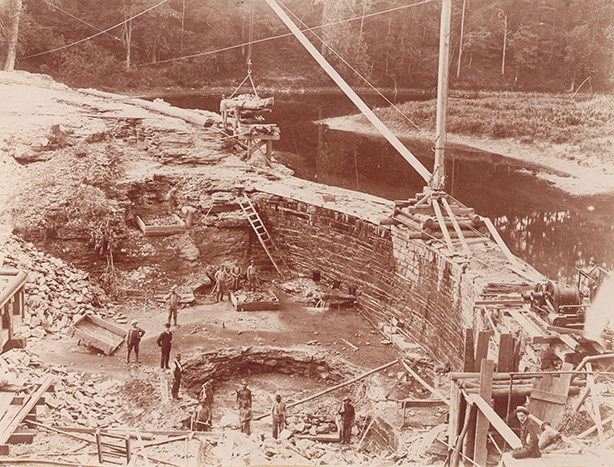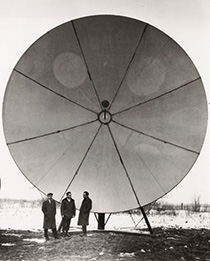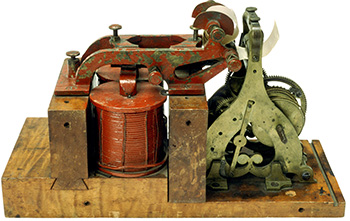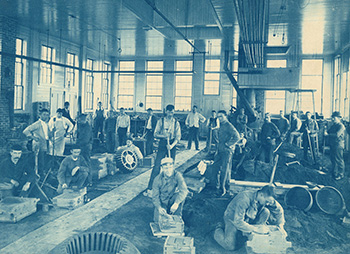FROM THE COLLECTIONS

Construction of the Cornell Hydraulics Laboratory, approx. 1897-98. Image: From the Division of Rare and Manuscript Collections.

Parabolic antenna used for trans-horizon communications research project, 1950s, electrical engineering. From left: Professor Nelson Bryant, unidentified, senior research associate Michael Colbert. Image: From the Division of Rare and Manuscript Collections. See larger image
Challenging impossibilities
Applying innovation and the sheer force of will to seemingly insurmountable challenges has been central to the character of Cornell since its inception. Ezra Cornell's abiding faith in the world-changing potential of the telegraph left his family destitute before it made his fortune. His ideas, inventions and investments helped drive the installation of telegraph lines across the Northeast and the Midwest. When his once-bankrupt company merged with a powerful rival to create the Western Union Telegraph Co. in 1855, his new wealth ushered in the focus on philanthropy and education that led him to found the university.

The original telegraph receiver used in Baltimore for the receipt of the first telegraph message on May 24, 1844. Image: From the Division of Rare and Manuscript Collections. See larger image

A cyanotype of the machine shops in the Sibley College of the Mechanic Arts, ca. 1885. Image: From the Division of Rare and Manuscript Collections. See larger image
This spirit of rigorous problem solving and big ambition was in full evidence some 40 years later, when the College of Civil Engineering set out to harness nature and create, in the words of the college's director and dean, Professor E.A. Fuertes, "a laboratory superior to anything built hitherto in any country." The construction of the Hydraulic Laboratory in Fall Creek was a bold and immense undertaking, intended to create a dam holding 50 million to 70 million gallons of water, with a 500-foot canal blasted through 16 feet of solid rock. The lab, near the foot of Beebe Lake, eventually would become one of the most iconic features on campus and was used as an experiment station for six decades, enabling "researches which heretofore have been considered as absolutely among the impossibilities," according to an 1898 article in The Cornell Daily Sun.
– Melanie Lefkowitz